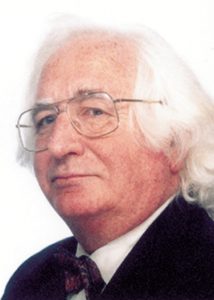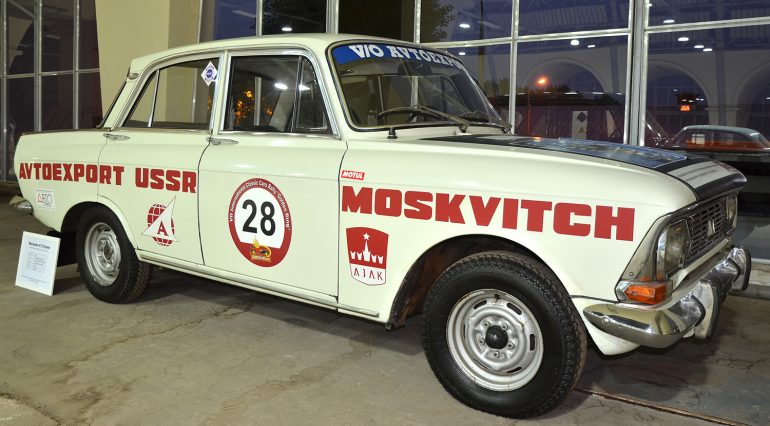At the time of writing, there is talk of a Russian-backed team preparing to enter Formula One in 2006. I will believe it when I see it. Apart from the fact that the Russian political scene is in a state of flux, I have seen too many motor racing projects fail to make the starting grid, but it has got me thinking about Russian motor racing.
Who remembers the Svezda Salut? This was a 1952 500-cc single-seater built on Cooper lines—the Russkies even released a picture of it winning a race. Does this mean there was 500-cc Formula Three racing in Russia? Unfortunately not, it was a staged propaganda picture—a knot of people stood near a line marked on a runway with no other car in sight. Not surprisingly, photographs of the 350-cc Svezda “record-breaker” (it looked like a model of John Cobb’s Napier Raliton Special) were not taken seriously either.

Clearly, a car was made by the “Let’s-All-Be-Equal” brigade, but you need two cars to make a race.
Russian military aircraft have long been special and the Union of Soviet Socialist Republics was the first to put a satellite into space orbit and a man into space. Russia had the engineers, America played “catch-up” in the Space Race, and we wondered what they could do if the expertise was applied to other areas.
In 1958 there were reports of the Kharkov F1 car and, in Britain, it made the national press. The “Daily Express” even paid for the chief of the Moscow Automobile Club to attend the 1958 International Trophy at Silverstone. Had there been tobacco sponsorship, there would surely have been a stampede to sign Kharkov’s ace driver, Valiery Nikitin.
The Kharkov Six, an aerodynamic six-cylinder car, which apparently conformed to F1 rules, was claimed to have achieved an average speed of 175 mph “on a six-mile course”. It turned out to be a special built for record breaking and 175 mph was not exceptional for a record car of 2.5 liters in 1958, unless you lived in a one-room apartment in Minsk with your in-laws.
Then there were the ZIS/ZIL sports racers, of which we in the West learned very little. ZIS stood for Zavod Imjeni Stalina; Uncle Joe graciously permitted a company making trucks to be re-named in his honor and, in 1936, came the ZIS-101 limo, copied from a Buick 90. These were never sold, but built for the use of Communist Party officials who also had exclusive use of certain roads. All animals are equal, but some animals are more equal than others.
As though Russia did not have enough on its plate, in 1942, like the Siege of Stalingrad, and as though Uncle Sam did not have enough problems with Hirohito and Hitler, FDR arranged for obsolete Packard tooling to be shipped to his great pal, so that Joe could have a new limo. Ours not to reason why… I hope that not too many sailors died shipping the tools.
Having “Stalin” as a model name had lost some of its luster in the late 1950s (the SS name had a similar problem in 1945, so became Jaguar) and the cars were renamed ZIL after Ivan A. Likhachev, a former Glorious Minister of Transport.[pullquote]“For one season, the Moskvich 412, an unbelievably dreadful car bought only by vegetarian sociologists, hammered the opposition.”[/pullquote]
Apparently a ZIS was raced with difficulty, having a wheelbase of 148 inches and weighing nearly three tons.
By 1958, ZILs had Cadillac-copy six-liter V-8s and a couple were clothed with GRP and paper honeycomb bodies. They were vast (local rules still demanded a riding mechanic) but, with a claimed 220 bhp, were said to be capable of 143 mph. There were others and one was said to have set a Soviet record of 193.49 mph. It was claimed that these behemoths were successful in Soviet racing. Soviet racing, 1945–89, is a subject awaiting a PhD thesis, possibly by a student at the Jim Brown University.
In the 1960s, a story appeared in the British press that Cooper was to use a bespoke Moskvich V-12 F1 engine, but this was John Cooper pulling a journalist’s leg during a liquid lunch. It was believed because Russia was still then number one in space.
Moskvich cars did, however, later turn in some good performances in the tougher rallies in the early 1970s (they were built to survive in Siberia) and enjoyed spectacular success for a year or two in British saloon car racing.
Moskvich cars were made by MZMA (roughly, the Moscow Light Automobile Works) and the first Opel-copies appeared in 1939. In 1947, however, came the Moskvich 400, which was a 1939 Opel Kadett with a new name. Russia had taken the entire Opel production line and shipped it home. This is not the place to dwell on the Moskvich line, but its one-millionth car was made in 1967 and it sold in 70 countries, including Britain.
John Webb, who ran Brands Hatch, Cadwell Park, Oulton Park and Snetterton, was a man with ideas—think of Formula Ford and F5000. Webbie came up with the idea of saloon car races where the classes were based on manufacturers’ list prices.
Tony Lanfranchi, who died last year, read the rules, bought a Moskvich 412, and ran in the £600 class. Even in 1973 there were not many cars you could buy for £600. Tony entered 29 races, took 28 wins and a 2nd, and won both British championships.
For one season, the Moskvich 412, an unbelievably dreadful car bought only by vegetarian sociologists, hammered the opposition.
Not long after, the Moskvich 412 was banned from sale in Britain because too much full lock caused the front wheels to wear thru the brake pipes. I think that even Marxists were secretly relieved; it meant they could buy a Datsun with a clear conscience.
Twenty-nine starts, 28 wins and one 2nd place—even in Maranello they’d concede that was a good season. It was achieved under the inspiration of glorious Comrade Lenin, whose make of choice was Rolls-Royce, but I’ll let that pass.




